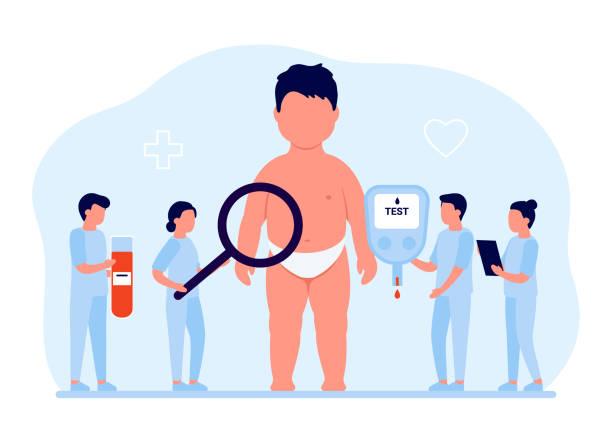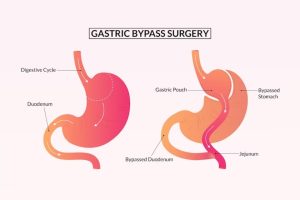Childhood obesity: the importance of early intervention and proper nutrition
Table of Contents

Introduction
Childhood obesity has become a growing public health concern worldwide, with the prevalence of overweight and obesity among children increasing over the past few decades.
According to the World Health Organization, the number of overweight children under five globally is estimated to be over 42 million, showing no signs of slowing down [1].
Obesity in childhood can lead to a range of adverse health outcomes, including cardiovascular disease, type 2 diabetes, and musculoskeletal disorders, which can persist into adulthood [2].
Childhood obesity is a complex issue with multiple factors contributing to its development, including genetic, environmental, and lifestyle factors.
Children born to parents who are overweight or obese are more likely to develop obesity, highlighting the role of genetics in developing the condition [3].
Environmental factors such as the availability and accessibility of unhealthy foods and sedentary lifestyles also contribute to the increasing prevalence of childhood obesity [4].
Early intervention and proper nutrition
Importance of early intervention and proper nutrition
Early intervention and good food are essential in addressing childhood obesity.
Identifying children who are overweight or at risk of becoming overweight at an early stage is crucial in preventing the condition from becoming chronic [5].
Interventions, including lifestyle modifications and behavioural therapy, effectively prevent and treat childhood obesity [6].
Proper nutrition is also vital in addressing childhood obesity.
A balanced and healthy diet that includes a variety of fruits, vegetables, whole grains, and lean proteins can help prevent obesity and improve overall health outcomes in children [7].
Explore the prevalence and causes of childhood obesity and discuss the impact of childhood obesity on physical, psychological, and social well-being.
We will also discuss the importance of early intervention and proper nutrition in addressing childhood obesity.
Practical tips for promoting healthy eating habits and discuss future directions for addressing this critical public health issue.
Prevalence and causes of childhood obesity
Childhood obesity: examining the role of genetics
The prevalence of childhood obesity has increased significantly in the past few decades, and it has become a significant public health concern worldwide.
In the United States, the prevalence of obesity among children and adolescents aged 2-19 years increased from 10.7% in the 1980s to 18.5% in 2018 [1].
In Europe, childhood obesity has increased threefold over the past two decades [2]. The increase in childhood obesity is attributed to several factors, including genetics, environmental factors, and lifestyle choices.
Genetics plays a significant role in the development of childhood obesity. Children with overweight or obese parents are more likely to develop obesity themselves, highlighting the genetic component of the condition.
A study that examined the genetic influence on obesity found that the heritability of obesity in childhood ranges from 30% to 70%, depending on the population studied [3]. This suggests that genetic factors can predispose children to developing obesity.
Environmental factors
Environmental factors also contribute to the increasing prevalence of childhood obesity. Children’s environments have changed over the past few decades, with an increase in the availability and accessibility of unhealthy foods and a decrease in physical activity.
Food environments dominated by high-energy, nutrient-poor foods have been linked to increased energy intake and obesity in children [4].
Sedentary behaviours such as screen time and a lack of physical activity have been associated with an increased risk of childhood obesity [5].
Lifestyle choices also contribute to the development of childhood obesity. Dietary factors such as high intake of sugar-sweetened beverages, fast foods, and processed foods are associated with an increased risk of obesity in children [6].
Lack of sleep has been linked to an increased risk of childhood obesity, as it disrupts the hormonal regulation of appetite and energy metabolism [7].
Parental feeding practices such as using food as a reward or using pressure to eat have also been linked to an increased risk of childhood obesity [8].
Addressing the issue of childhood obesity
A comprehensive approach to preventing childhood obesity
Addressing the issue of childhood obesity requires a comprehensive approach that considers the various factors that contribute to the condition.
Preventing childhood obesity requires a multifaceted approach that includes individual, community, and policy interventions. Promoting healthy eating habits and physical activity at an early age is crucial in preventing obesity.
Creating healthy food environments and promoting physical activity in schools, communities, and homes can contribute to the prevention of childhood obesity [9].
Food labelling, restrictions on the marketing of unhealthy foods to children, and taxes on sugar-sweetened beverages have also been shown to be effective in reducing the prevalence of childhood obesity [10].
Childhood obesity is a significant public health concern worldwide, and its prevalence has increased significantly in recent years. The development of obesity in childhood is attributed to multiple factors, including genetics, environmental factors, and lifestyle choices.
Addressing the issue of childhood obesity requires a comprehensive approach that considers the various factors that contribute to the condition.
Promoting healthy eating habits and physical activity at an early age, creating healthy food environments, and promoting physical activity in schools, communities, and homes can contribute to the prevention of childhood obesity.
Policy interventions such as food labelling, restrictions on the marketing of unhealthy foods to children, and taxes on sugar-sweetened beverages have also been effective in reducing the prevalence of childhood obesity.
Impact of childhood obesity
Childhood obesity has significant short- and long-term consequences on physical, psychological, and social well-being.
Obese children are more likely to experience adverse health outcomes such as cardiovascular disease, type 2 diabetes, and musculoskeletal disorders than their non-obese counterparts [1].
The Impact of childhood obesity is not limited to physical health outcomes but also affects psychological and social well-being.
The Physical Impact of childhood obesity
Childhood obesity increases the risk of several physical health outcomes, including cardiovascular disease, type 2 diabetes, and musculoskeletal disorders.
Obese children are at an increased risk of developing hypertension, high cholesterol levels, and impaired glucose tolerance, which can lead to type 2 diabetes [2].
Childhood obesity is also linked to the development of musculoskeletal disorders such as joint pain, arthritis, and back pain, which can persist into adulthood [3].
The Psychological Impact of childhood obesity
Childhood obesity has a significant psychological impact on children, leading to low self-esteem, body dissatisfaction, and depression.
Obese children are at an increased risk of experiencing social isolation, stigmatisation, and discrimination, which can develop anxiety and depression [4].
The negative attitudes and behaviours towards obese individuals in society can have a lasting impact on the psychological well-being of obese children, leading to negative self-perceptions and body dissatisfaction [5].
Social Impact of childhood obesity
Childhood obesity also significantly impacts social well-being, affecting the child’s social development, peer relationships, and academic performance.
Obese children are more likely to experience social exclusion, bullying, and discrimination, leading to lower self-esteem, isolation, and a lack of social support [6].
Obesity has been linked to poor academic performance, leading to lower educational attainment and reduced opportunities in adulthood [7].
Childhood obesity has significant short- and long-term consequences on physical, psychological, and social well-being.
The physical Impact of childhood obesity includes an increased risk of cardiovascular disease, type 2 diabetes, and musculoskeletal disorders.
Obese children are also at an increased risk of experiencing adverse psychological outcomes such as low self-esteem, body dissatisfaction, and depression.
Childhood obesity also significantly impacts social well-being, leading to social exclusion, bullying, and poor academic performance.
Early intervention for childhood obesity
Early intervention is crucial in addressing childhood obesity as it can prevent the condition from becoming chronic and reduce the risk of adverse health outcomes.
Identifying children who are overweight or at risk of becoming overweight at an early stage is critical in preventing obesity.
The American Academy of Pediatrics recommends that healthcare providers screen children for overweight and obesity at every well-child visit and provide appropriate interventions for at-risk children [1].
Identifying obesity in Children
Several methods are used to identify obesity in children, including body mass index (BMI), waist circumference, and skinfold thickness.
BMI is the most commonly used method to assess obesity in children and is calculated by dividing weight in kilograms by height in meters squared. BMI-for-age charts determine whether a child is overweight or obese [2].
Waist circumference is also used to assess obesity in children and is particularly useful in children with high body fat [3].
Skinfold thickness measurements are also used to assess body fat percentage in children.
Strategies for early intervention
Several strategies are used for early intervention in childhood obesity, including lifestyle modifications, behavioural therapy, and pharmacological interventions. Lifestyle modifications, such as promoting healthy eating habits and physical activity, are the cornerstone of early intervention in childhood obesity.
Behavioural therapy, such as cognitive-behavioural therapy, modifies eating behaviours and promotes healthy lifestyle habits in children [4].
Pharmacological interventions, such as orlistat, a weight-loss medication, may be considered in some cases but are not recommended as a first-line treatment for childhood obesity [5].
Family-based interventions are also commonly used for early intervention in childhood obesity. These interventions involve parents and caregivers in the treatment plan, as they play a critical role in promoting healthy eating habits and physical activity in children.
Family-based interventions effectively reduce body mass index and improve overall health outcomes in children [6].
Early intervention is crucial in addressing childhood obesity as it can prevent the condition from becoming chronic and reduce the risk of adverse health outcomes.
Identifying children who are overweight or at risk of becoming overweight at an early stage is critical in preventing obesity.
Several strategies are used for early intervention in childhood obesity, including lifestyle modifications, behavioural therapy, and pharmacological interventions.
Family-based interventions involving parents and caregivers in the treatment plan also effectively reduce body mass index and improve overall health outcomes in children.
Proper nutrition for children
Proper nutrition is crucial in preventing childhood obesity and promoting overall health and well-being in children.
A well-balanced diet that includes a variety of fruits, vegetables, whole grains, lean proteins, and healthy fats is essential for children’s growth and development.
Limiting the consumption of high-calorie, low-nutrient foods such as sugar-sweetened beverages and processed snacks can help prevent childhood obesity [1].
Fruits and vegetables
Fruits and vegetables are essential to a healthy diet and are rich in vitamins, minerals, and fibre.
Eating colourful fruits and vegetables can help children meet their daily nutrient needs and reduce their risk of chronic diseases such as heart disease and type 2 diabetes.
Parents can encourage children to eat more fruits and vegetables by offering various options, including fresh, frozen, and canned fruits and vegetables.
Parents can involve children in meal planning and preparation, which can increase their interest in trying new foods [2].
Whole grains
Whole grains are an excellent source of fibre, vitamins, and minerals and should be included in children’s diets.
Examples of whole grains include brown rice, quinoa, whole-wheat pasta, and whole-grain bread.
Parents can encourage children to eat more whole grains by replacing refined grains with whole grains, such as swapping white bread with whole-grain bread or white rice with brown rice [3].
Lean proteins
Protein is essential for children’s growth and development, and lean proteins such as fish, poultry, beans, and nuts should be included in their diet.
These foods are rich in essential nutrients such as iron, zinc, and B vitamins, which are critical for children’s development.
Parents can encourage children to eat more lean proteins by offering various options and incorporating them into their favourite meals [4].
Healthy fats
Healthy fats such as omega-3 fatty acids are essential for children’s brain development and cognitive function.
Sources of healthy fats include fatty fish such as salmon, avocados, nuts, and seeds.
Parents can incorporate healthy fats into their children’s diets by offering them as snacks or including them in meals [5].
Limiting high-calorie, low-nutrient foods
Limiting the consumption of high-calorie, low-nutrient foods such as sugar-sweetened beverages, candy, and processed snacks can help prevent childhood obesity.
These foods are often high in calories and low in essential nutrients and should be consumed in moderation.
Parents can encourage children to make healthier choices by offering healthier snack options such as fresh fruits, vegetables, and low-fat dairy products [6].
Proper nutrition is crucial in preventing childhood obesity and promoting overall health and well-being in children.
A well-balanced diet that includes a variety of fruits, vegetables, whole grains, lean proteins, and healthy fats is essential for children’s growth and development.
Parents can encourage children to make healthier choices by offering various healthy food options, involving children in meal planning and preparation, and limiting the consumption of high-calorie, low-nutrient foods.
Conclusion
Childhood obesity is a significant public health concern with short- and long-term consequences on physical, psychological, and social well-being.
Early intervention through proper nutrition and lifestyle modifications is crucial in preventing childhood obesity and reducing the risk of adverse health outcomes.
Identifying children at risk of becoming overweight or obese early and providing appropriate interventions such as family-based interventions, behavioural therapy, and pharmacological interventions can prevent obesity from becoming chronic.
Proper nutrition is a critical component of early intervention in childhood obesity. A well-balanced diet that includes a variety of fruits, vegetables, whole grains, lean proteins, and healthy fats is essential for children’s growth and development.
Parents can encourage children to make healthier choices by offering various healthy food options, involving children in meal planning and preparation, and limiting the consumption of high-calorie, low-nutrient foods.
Addressing childhood obesity through early intervention and proper nutrition is crucial in preventing adverse health outcomes and improving overall well-being.
Healthcare providers, policymakers, and parents are critical in addressing childhood obesity and promoting healthy lifestyles for children.
References
- World Health Organization. Childhood overweight and obesity. Accessed on April 25, 2023.https://www.who.int/news-room/fact-sheets/detail/obesity-and-overweight
- Must A, Strauss RS. Risks and consequences of childhood and adolescent obesity. Int J Obes Relat Metab Disord. 1999;23 Suppl 2:S2-11. doi: 10.1038/sj.ijo.0800852.https://pubmed.ncbi.nlm.nih.gov/10340798/
- Maes HH, Neale MC, Eaves LJ. Genetic and environmental factors in relative body weight and human adiposity. Behav Genet. 1997;27(4):325-51. doi 10.1023/a:1025635913927.
- Gurnani M, Birken C, Hamilton J. Childhood obesity: causes, consequences, and management. Pediatr Clin North Am. 2015;62(4):821-40. doi 10.1016/j.pcl.2015.04.001.https://pubmed.ncbi.nlm.nih.gov/26210619/
- Friedemann C, Heneghan C, Mahtani K, Thompson M, Perera R, Ward AM. Cardiovascular disease risk in healthy children and its association with body mass index: systematic review and meta-analysis. BMJ. 2012;345:e4759. doi: 10.1136/bmj.e4759.
- Barlow SE; Expert Committee. Expert committee recommendations regarding preventing, assessing, and treating child and adolescent overweight and obesity: summary report. Pediatrics. 2007;120 Suppl 4:S164-92. doi 10.1542/peds.2007-2329C.https://pubmed.ncbi.nlm.nih.gov/18055651/
- Ludwig DS, Peterson KE, Gortmaker SL. Relation between consumption of sugar-sweetened drinks and childhood obesity: a prospective, observational analysis
- Centers for Disease Control and Prevention. Childhood Obesity Facts.
- Lobstein T, Jackson-Leach R, Moodie ML, et al. Child and adolescent obesity: part of a bigger picture. Lancet. 2015;385
- Guo SS, Wu W, Chumlea WC, Roche AF. Predicting overweight and obesity in adulthood from body mass index values in childhood and adolescence. Am J Clin Nutr. 2002;76(3):653-8. doi 10.1093/ajcn/76.3.653.https://pubmed.ncbi.nlm.nih.gov/12198014/








